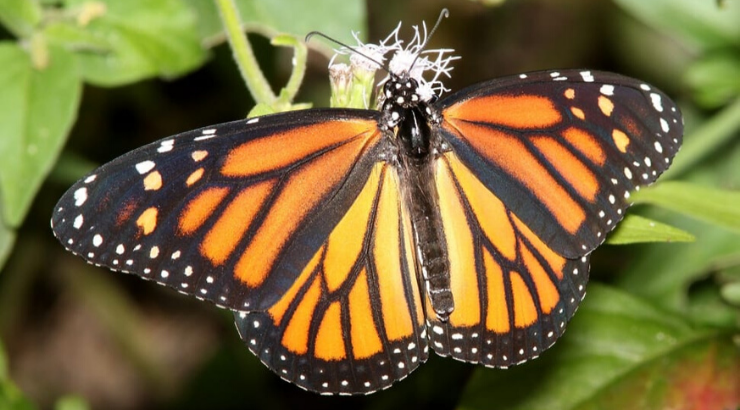Great News! This Year’s Monarch Butterfly Migration Shows a Rebounding Population
 By Elias Marat
By Elias Marat
Every fall the monarch butterfly population makes its epic migratory journey across the United States, covering trees like leaves as they make their way to the forests of the Mexican state of Michoacán and the eucalyptus- and pine-rich Californian Central Coast.
The majestic black-and-gold pollinator is unique because it’s one of the only butterfly species that travels as far as 3,000 miles, traveling in vast droves from October to mid-November in a dazzling display that fill skies with the iconic colors, blanketing landscapes as they overwinter and rest before continuing on.
Every October the Monarchs migrate to Pacific Grove, CA and it’s absolutely beautiful! Thought you’d like this @Scarlets55 @KMFras @ladava @AuStar3d Tomorrow is their butterfly parade. ???? pic.twitter.com/G5bHuYrbw6
— Carolyn Sames (@SamesCarolyn) October 4, 2019
[do_widget id=text-16]
But over the past two decades, the iconic North American monarch has faced sharp population declines. In 1997, an estimated 682 million monarchs traveled through the air, according to the Center for Biological Diversity. But by 2014, the number fell to a staggering 25 million before bouncing back to 150 million in 2016. However, according to a survey released in January by conservation group the Xerces Society for Invertebrate Conservation, the Monarch butterfly “declined to dangerously low levels”—roughly 80 percent—in central Mexico, and 99 percent along California’s coast.
However, this year there have been several reports that the beloved butterfly may actually be making a strong comeback and is arriving in greater numbers than ever expected, according to Better Home and Gardens.
Beautiful Monarchs of Pacific Grove… pic.twitter.com/Oi35f37l6m
— Carly The Whistleblower????Warren 2020 (@ondinemonet) October 19, 2019
Observers along their eastern migration route in Colorado saw massive amounts of the creatures as they headed south for winter, with video footage captured in October by Colorado Parks & Wildlife depicting dramatic numbers of butterflies resting on trees and bushes at a park near the town of Lamar.
Lamar, CO was named #monarchcity this spring and #JohnMartinReservoirStatePark is beginning to see why. The Monarch Butterflies are stopping by on their 3,000 mile migration to Mexico. Check it out ⬇️ pic.twitter.com/TcgMHSGPca
— CO Parks & Wildlife (@COParksWildlife) October 1, 2019
On October 16, the Lady Bird Johnson Wildlife Center reported that monarchs had landed in Austin, Texas in numbers far larger than usual, as they fed on the milkweed which grows in abundance throughout Central Texas and fuels their journeys.
The anecdotal evidence from conservationists could also be supported by hard data collected in January of this year by the Center for Biological Diversity, which found that the population resting for winter in Mexico had leaped by 144 percent since the last survey was made in 2018. The population count had even surpassed previous years since 2006, and this year’s weather could be a boon for the monarchs’ egg and larvae survival rate.
Yet while this good news should be welcomed, experts are urging caution. Matthew Shepard, the communications and outreach director at the Xerces Center, noted that researchers can only take accurate population counts while they are clustered at their overwintering sites in Mexico and California.
Shepard explained:
At this point in the year, we won’t know how monarchs are doing in either the eastern states or the west.
While monarchs are spread across the landscape, it isn’t possible to get an overall count, only a sense of how things are based on the number passing through a few scattered locations.”
In general, the species is still in danger of extinction with previous estimates saying that the monarch faces a 50-75 percent risk of extinction within 20 years and 65-85 percent risk of extinction within 50 years should remain on our minds.
Yet we should also derive hope from the news that monarch populations are modestly rebounding, and a good portion of the credit is due to conservation groups like Xerces Society, the Center for Biological Diversity, Monarch Watch, the Monarch Joint Venture and others who have spared no effort to prevent the collapse of the monarch population across North America.
By Elias Marat | Creative Commons | TheMindUnleashed.com
Subscribe for natural health news to your inbox. Follow Natural Blaze on YouTube, Twitter and Facebook.


